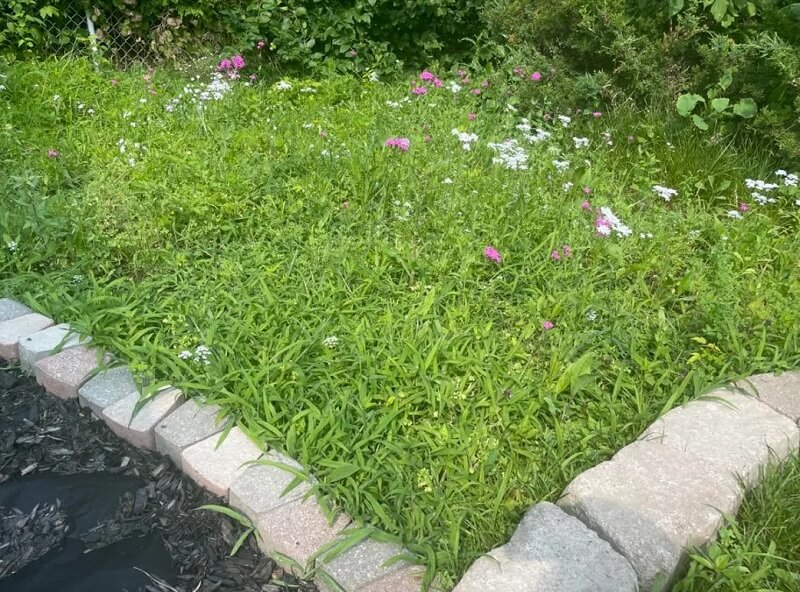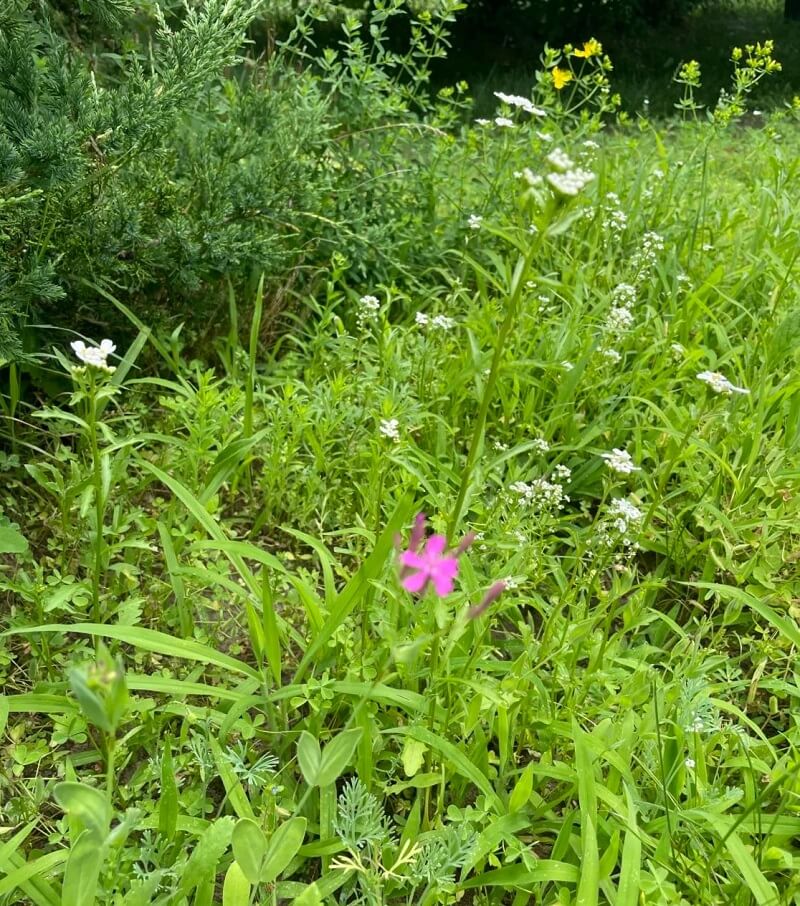A homeowner looking to create a beautiful wildflower garden was frustrated to see that while their flowers flourished, so did some unwanted grass.
They posted photos of the grass-choked garden in the subreddit r/gardening, asking for advice on how to prevent it from happening again.


"Had my wildflower garden for the first time last year," they wrote. "Some spots did really well with mostly wildflowers. Other spots had little to no wildflowers and a ton of this grass (I think it's quack grass, but may be crabgrass- let me know)."
They concluded, "Just want to know where to begin to prevent this from happening again!"
One commenter, keeping it simple, said: "Add seeds. Pull weeds."
Other commenters quickly jumped in with their suggestions. "Any grass that's so aggressive it chokes out the wildflowers you want will need to be killed," one person advised, recommending using cardboard to smother the grass. Many gardeners prefer this method to the similar suffocation approach using sheets of heavy plastic, which has been found to leach toxic chemicals into the ground the longer it's in place.
"I always just pulled with my hands and reseeded with wildflowers each year," another said.
And in addition to removing the overgrown grasses, people had suggestions for what to incorporate instead. One person wrote, "There are grasses you can mix in with wildflowers [without overwhelming them]...I'm personally a fan of clover."
Another Redditor suggested finding a local wildflower society or gardening club to discuss with local experts and hear their ideas for what grows well in the area.
"Incorporate some native grasses; they grow faster and provide food for birds and critters," one person chimed in.
In addition to growing faster and providing critical habitat and food sources for local fauna, native plants also cost much less for the homeowners who keep them since they require very little water and upkeep. And — particularly once the other grasses have been pared back — a natural lawn will be self-sustaining year after year.
OP came away from the conversation feeling energized. "I'll look into native grasses I can add to my wildflower seed mix to hopefully grow instead of whatever grass this is that's taking over," they wrote.
Join our free newsletter for easy tips to save more and waste less, and don't miss this cool list of easy ways to help yourself while helping the planet.









